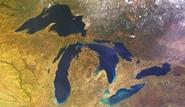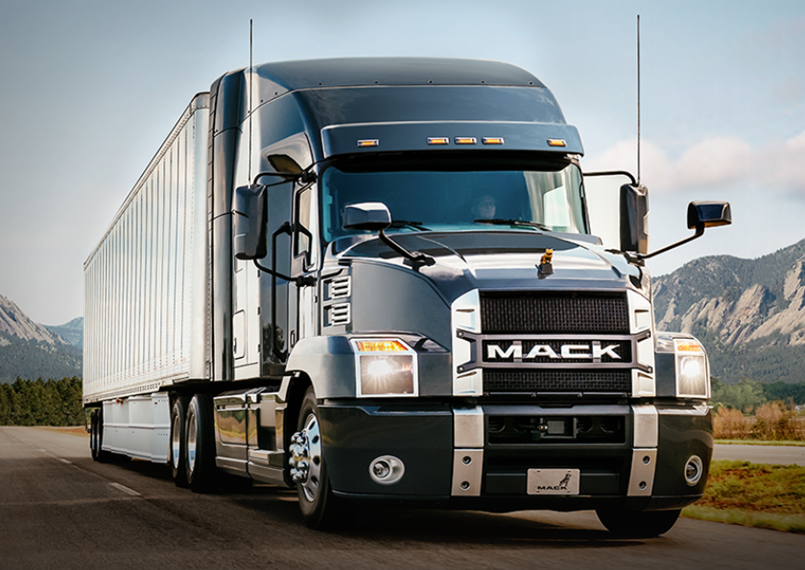Shipping and Logistics

Soo Locks Open On Snowy Day in Sault Ste. Marie
Written by Sandy Williams
March 26, 2015
A blustery March 25th marked the beginning of the Great Lakes shipping season and the opening of the Soo Locks. The first lake freighter to enter the Locks was the Edwin H. Gott from Great Lakes Fleet Inc. The Gott, named for the former US Steel chairman and CEO, entered the Locks at 11:05 a.m. on Wednesday on its upbound voyage to Duluth, Minn.
 The Gott was prevented by heavy ice from continuing through the Poe Lock and had to back out and wait for assistance by the US Coast Guard cutter Mackinaw. The Poe is one of four parallel locks on the St. Mary canal that comprise the Soo Locks system, allowing ships to navigate the 21 foot drop between Lake Superior and the lower Great Lakes
The Gott was prevented by heavy ice from continuing through the Poe Lock and had to back out and wait for assistance by the US Coast Guard cutter Mackinaw. The Poe is one of four parallel locks on the St. Mary canal that comprise the Soo Locks system, allowing ships to navigate the 21 foot drop between Lake Superior and the lower Great Lakes
The first downbound vessel is expected to be the John G. Munson escorted by coast guard cutter Alder from Marquette.
The locks were closed on January 15 for critical repairs by the US Army Corp of Engineers. Workers braved frigid temperatures and snow to prepare the locks for the new season. The Poe Lock is the biggest of the four locks, allowing the largest lake freighters access to and from Lake Superior. Seventy percent of cargo passes through the Poe annually. The second largest lock, the McArthur will continue to undergo maintenance for the next several weeks.
Ice coverage on the Great Lakes was fierce again this winter, reaching a peak of 88.8 percent on March 2, shy of the 92 percent peak on March 6, 2014. As you can see from the March 25 data analysis below, the coverage was at 57.6 percent on opening day.
The past two winters have been unusually cold compared to 2013 when the Great Lakes barely registered ice coverage at this point in the season.
George Leshkevich of NOAA/GLERL told SMU that ice conditions appear to be heavy near Whitefish Bay. The progress of the US Coast Guard Cutter Mackinaw has been slow in the area, possibly due to brash ice that can pile up as much as 10 meters, particularly in that area, due to winds and water movement. Much of brash ice can be below waterline adding to navigation difficulties for freighters and ice breaking vessels. Leshkevich said fluctuation of highs and lows of ice coverage has been more intense since 1998. It is difficult to be able to predict if next winter will be comparable to the harsh conditions of 2014 and 2015.
Interlake Steamship Company had two ships underway Wednesday: the M/V Mesabi Miner carrying coal from Superior, WI for Taconite Harbor, MN and Dorothy Ann/Pathfinder doing iron ore shuttles on the Cuyahoga River in Cleveland, OH.
Brendan P. O’Connor, Vice President, Marketing and Marine Traffic, said the areas that the two ships are operating in are less of a challenge than the historically more difficult and problematic areas in Lake Superior, Whitefish Bay, the river systems (St. Mary’s river, St. Clair river and Detroit rivers) and the western basin of Lake Erie.
“We are constantly looking at, and changing our strategy as a result of the wind which drives the ice into or away from operating areas and can change substantially in a very short period,” said O’Connor. “We will remain very dependent on the both US and Canadian ice breaking capabilities in addition to commercial assistance to help flush ice away from individual loading or discharging facilities.”
O’Connor said Interlake is getting a later start than desired this year due to operating conditions on the Great Lakes but customer inventory is stronger this year and will be less impacted the kind of delays that occurred last year.
Algoma Central currently has three oil tankers that have been working the Great Lakes all winter. The first of Algoma’s dry bulk vessels was set to begin sailing on March 25.
“We expect ice conditions to be similar or a little better than 2014, but still well above the historical average, with ice breaker escorts required in the usual spots such as Whitefish Bay, the Mackinaw Strait and in Lake Erie,” said Bruce Partridge, Director of Sales at Algoma Central Corp, in an email to SMU. “Ice coverage on the lakes has dropped to about the 50% mark but as the ice breaks up and the wind blows it around we will see problem areas which will cause delays. We continue to work with our customers and the Coast Guard to minimize any delays to the fleet and to be sure we service our customers so the vital cargoes move as quickly as possible.”
Vessel locations can be tracked on Boatnerd.com. As you can see in the map above numerous ships are ready to leave ports for the open waters of the Great Lakes. U.S. and Canadian icebreakers will be available to assist ships as they make their way across areas of heavy ice coverage.
In 2014, 5.8 million net tons of ore were shipped from U.S. ports on the Great Lakes, according to data from the Lake Carrier’s Association.

Sandy Williams
Read more from Sandy WilliamsLatest in Shipping and Logistics

Wittbecker on Aluminum: US-China trade war clobbers cross-Pacific trade
Container shipping lines have sharply increased blank sailings on Transpacific routes in response to escalating trade tensions between the US and China.

Volvo plans to lay off up to 800 workers at US truck plants
The company cited uncertainty about freight rates and demand, regulatory changes and the impact of tariffs.

Trump signs executive order aimed at making US shipbuilding ‘great again’
President Trump on Wednesday signed an executive order meant to breathe new life into American shipbuilding and curb Chinese dominance in the sector.

Great Lakes iron ore trade fell again in March
Recall that shipments also saw a sharp decline in January.

Longshoremen ratify contract with maritime alliance
Nearly 99% of ILA members voted in favor of a new labor deal with the United States Maritime Alliance that covers workers at ports on the Atlantic and Gulf coasts.


